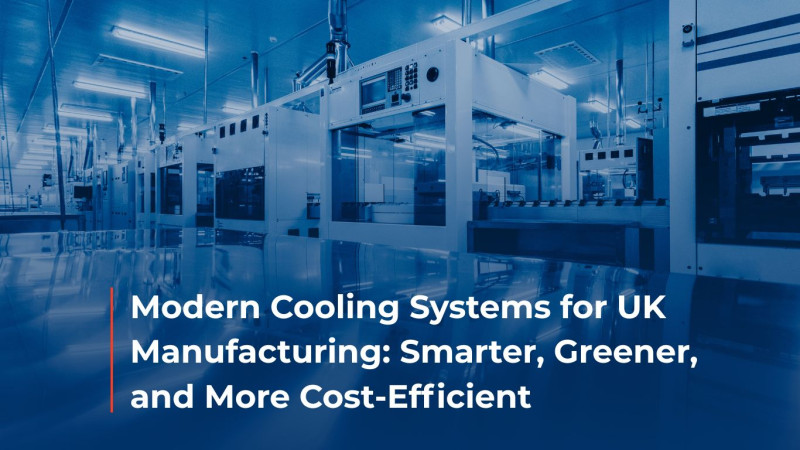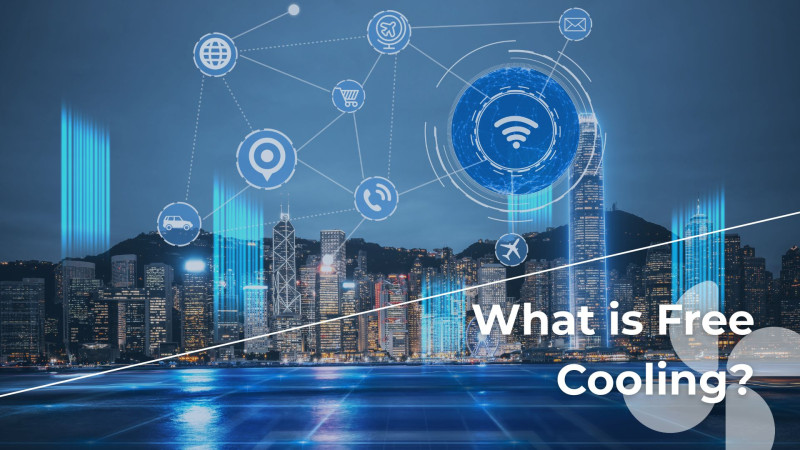Advances in High-Performance Cooling for Data Centres: Liquid Systems, Temperature Chaining and Intelligent Control
AI workloads, GPU-rich servers and high-performance computing are central to enterprise infrastructure, traditional air-cooling systems in data centres are fast approaching their thermal and economic limits. As rack densities rise and sustainability targets tighten, a new generation of cooling approaches has emerged—defined by direct liquid cooling, temperature chaining, and intelligent, data-driven control mechanisms.
This article explores these emerging technologies through a technical lens and highlights the importance of integrated service and support in ensuring reliability, efficiency, and long-term performance. As a leading specialist in chiller technologies, bespoke cooling solutions and full project lifecycle support, Cooltherm plays a pivotal role in enabling data centres to deploy these innovations at scale.
Rationale for New Cooling Architectures
The need to transition beyond conventional air cooling is driven by converging pressures:
- Thermal density: Modern compute workloads generate concentrated thermal loads far exceeding what fan-based systems can dissipate economically.
- Energy efficiency: In many data centres, cooling systems account for 30–40% of overall energy consumption. Improved cooling can substantially lower operational expenditure.
- Water and environmental constraints: Sites in water-stressed regions or with strict environmental standards benefit from liquid systems that require less evaporative water use.
- Heat reuse opportunities: Liquid cooling enables higher return temperatures, making recovered heat viable for secondary uses such as district heating or absorption chilling.
These challenges demand architectural rethinking and expert implementation to realise the benefits fully.
Emerging Technologies in Data Centre Cooling
Direct-to-Chip and Immersion Cooling
Liquid cooling is fast becoming the foundation of next-generation data centres. The two most prominent methods are:
- Direct-to-chip cooling, where coolant is channelled through cold plates mounted on processors, graphics units, and memory modules. This design minimises thermal resistance and supports denser rack arrangements.
- Immersion cooling, where servers are submerged in dielectric fluid, removing the need for airflow altogether and enabling dramatic energy savings.
Studies show that direct liquid cooling can reduce cooling power usage by up to 45% over conventional systems. Immersion systems, though still niche, are growing in adoption across AI-intensive facilities.
Temperature Chaining
An emerging architectural technique is temperature chaining or thermal cascading. Here, cooling loops are arranged in series rather than in parallel, allowing higher-grade return water from one cooling loop to feed subsequent systems or heat reuse pathways.
This setup improves energy efficiency, elevates return fluid temperatures, and enhances compatibility with heat reuse infrastructure. It also enables better management of thermal zones within high-density halls.
AI-Enhanced Control Systems
Machine learning and reinforcement learning (RL) frameworks are increasingly applied to cooling systems, enabling continuous optimisation based on real-time conditions. These systems adjust pump speeds, flow rates and chiller setpoints in response to workload distribution, environmental changes, and electricity pricing.
Notably, a reinforcement learning algorithm recently achieved 21% energy savings in a live data centre without breaching safety thresholds—demonstrating the power of intelligent automation when paired with sensor-rich infrastructure.
Rack-Integrated Cooling
Close-coupled cooling systems, located directly adjacent to or integrated within server racks, are making a resurgence—particularly in retrofit environments. These systems reduce the thermal transport distance, limit pressure loss, and simplify zone-specific cooling, offering a pragmatic step between air and full liquid immersion cooling.
Design Considerations and Technical Complexities
Deploying advanced cooling architectures demands more than just the right components; it requires systems engineering expertise and rigorous commissioning. Critical design considerations include:
- Fluid chemistry and compatibility with materials, seals and long-term system integrity.
- Hydraulic balancing, pressure drop management, and pipework design.
- Sensor coverage to enable real-time feedback loops and granular control.
- Redundancy and failure mode protection, including bypass circuits, backup systems, and emergency air fallback.
- Integration with legacy systems, ensuring mechanical, electrical, and control compatibility in retrofits.
- Economic and spatial viability of heat reuse—based on proximity to consumers and system configuration.
These factors must be evaluated holistically during planning and validated during commissioning.
The Role of Engineering, Installation and Lifecycle Support
To unlock the full value of liquid and hybrid cooling technologies, delivery must go beyond component supply. A seamless end-to-end approach encompassing design, installation, commissioning, and long-term maintenance is essential.
This is where Cooltherm distinguishes itself. With over three decades of thermal engineering expertise, the company offers:
- Bespoke chiller systems, tailored to each site’s power, footprint and redundancy requirements.
- End-to-end project execution, including system design, installation and integration into existing M&E infrastructure.
- Planned preventative maintenance and 24/7 reactive support, ensuring critical uptime and ongoing optimisation.
- Cloud-based diagnostics and remote monitoring, enabling predictive maintenance and performance benchmarking.
In high-stakes environments where failure is not an option, Cooltherm’s combination of technical depth and service responsiveness provides operators with long-term assurance and flexibility.
Future considerations
Industry analysts forecast sustained double-digit growth in liquid cooling adoption through 2030, spurred by the exponential growth in AI workloads and data processing needs. As energy constraints and heat reuse mandates become more prevalent, architectural decisions made today will define operational efficiency for years to come.
Emerging technologies such as microfluidic cooling where coolant circulates within silicon-level channels are already outperforming traditional cold plates in laboratory settings. While not yet commercialised, they represent the next frontier in cooling innovation.
Organisations that adopt forward-looking, adaptable infrastructure guided by expert engineering and supported by robust service models will be best placed to navigate this shift.
Data centre cooling is entering a new era defined by fluid dynamics, thermal recovery, and intelligent control. Moving beyond traditional CRAC units and airflow tuning, operators must now adopt a systemic approach that integrates cooling into the heart of infrastructure planning.
With proven experience in delivering high-performance chiller systems, full-project installations, and long-term support services, Cooltherm is uniquely equipped to help data centre owners and operators implement these advanced systems. Their ability to design, install and maintain high-efficiency solutions makes them a trusted partner in meeting the challenges of modern thermal infrastructure.
FAQs
Why are AI data centres harder to cool?
AI racks can exceed 40–100 kW, generating far more heat than traditional enterprise servers.
What’s the key difference between air and liquid cooling?
Air cooling relies on airflow, whereas liquid cooling removes heat directly from components, making it far more effective at higher power densities.
How costly is downtime for a data centre?
On average, it costs over £4,500 per minute, and this figure can rise sharply in AI-intensive environments.
Is preventive maintenance really worth the effort?
Yes, it reduces failure rates, extends hardware lifespan, and helps lower overall operating costs.
What’s the most sustainable cooling option?
Immersion cooling is currently the most energy-efficient, though hybrid systems tend to be more practical for many operators.
How does Cooltherm improve efficiency?
By installing advanced cooling systems, delivering predictive maintenance, and helping operators meet ESG goals and UK regulatory standards.
Want to know if your system could be saving you more?
📩 enquiries@cooltherm.co.uk | ☎️ 01179 610006
Related News

Is Your Cooling Strategy Resilient Enough? Lessons from the AWS Outage

Modern Cooling Systems for UK Manufacturing: Smarter, Greener, and More Cost-Efficient
